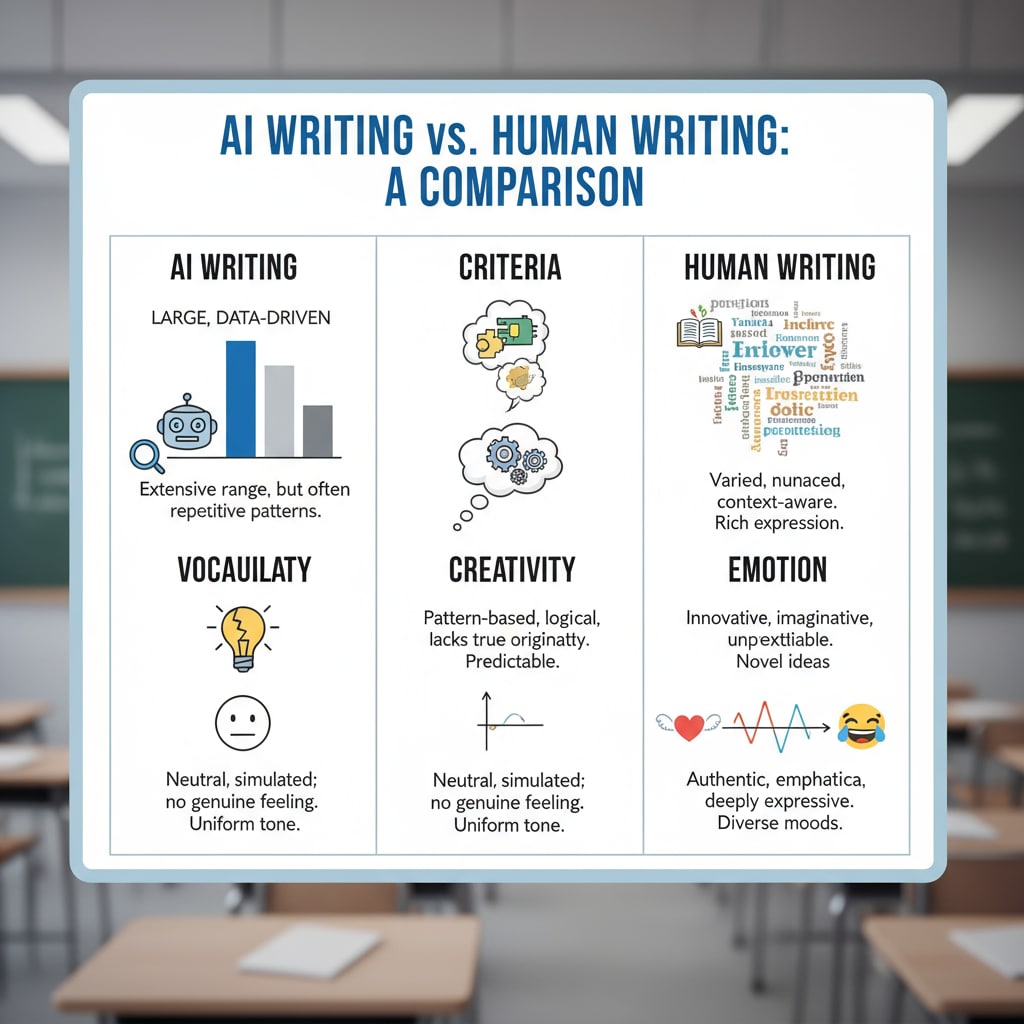In the digital age, the concepts of AI writing, authenticity, and writing characteristics have become increasingly relevant in education. The widespread use of AI writing tools has posed a new challenge to K12 education: how to teach students to recognize and appreciate the unique value of real human writing.

This article delves into an innovative teaching approach that involves comparative analysis of AI and students’ works to guide students in understanding the authenticity of writing, thereby cultivating their critical thinking and personal expression abilities.
The Rise of AI Writing and Its Impact on Education
AI writing tools have revolutionized the writing landscape. They can generate text rapidly, on various topics, and with a certain level of coherence. According to Wikipedia’s page on Artificial Intelligence in Writing, these tools use algorithms to analyze vast amounts of text data and produce new content. However, this has led to concerns in education. For example, students may be tempted to use AI to complete their writing assignments, undermining the development of their writing skills and the authenticity of their work.

Identifying the Characteristics of AI Writing
AI writing often has distinct characteristics. It may lack the depth of personal experience and emotion that human writing conveys. AI-generated text usually follows patterns and formulas it has learned during training. For instance, the language used may be more formal and less creative compared to human writing. As stated on Britannica’s page on Artificial Intelligence, understanding these characteristics is the first step in teaching students to distinguish AI writing from human writing. Teachers can show students examples of AI-generated texts and guide them to analyze elements such as vocabulary choice, sentence structure, and overall flow.
Readability guidance: By highlighting the differences in writing characteristics, students can better understand the nature of AI writing. Using short paragraphs and clear explanations helps students grasp these concepts easily. Incorporating transitional words like ‘however’ and ‘for instance’ makes the content more coherent.
Appreciating the Authenticity of Human Writing
Human writing is rich in authenticity. It reflects an individual’s thoughts, feelings, and unique perspectives. When teaching students, educators can emphasize the value of personal experiences and voices in writing. For example, a student’s narrative about a memorable event in their life will carry emotions and details that are distinctively human. This authenticity not only makes the writing more engaging but also showcases the writer’s growth and creativity.
Readability guidance: In this section, we focus on the importance of authenticity in human writing. Short sentences and simple language help convey this idea clearly. Transition words like ‘therefore’ and ‘in addition’ connect different points, enhancing the overall readability.
The Comparative Analysis Teaching Method
One effective teaching strategy is to conduct comparative analysis between AI and students’ writing. Teachers can present pairs of texts – one AI-generated and one written by a student – and ask students to identify the differences. This hands-on approach helps students develop critical thinking skills as they analyze elements such as style, tone, and the use of evidence. Through such exercises, students can better understand the unique qualities of human writing and why authenticity matters.
Readability guidance: The comparative analysis method is a key part of this teaching approach. Using lists to summarize the differences between AI and human writing can make the content more organized. Transition words like ‘as a result’ and ‘however’ are used to show the relationship between different ideas.
In conclusion, in the face of the growing influence of AI writing tools, teaching students to distinguish between AI and human writing is essential. By focusing on AI writing, authenticity, and writing characteristics, educators can help students develop the skills to appreciate and produce real, meaningful writing. This not only enriches their learning experience but also prepares them for a world where critical thinking and personal expression are highly valued.


